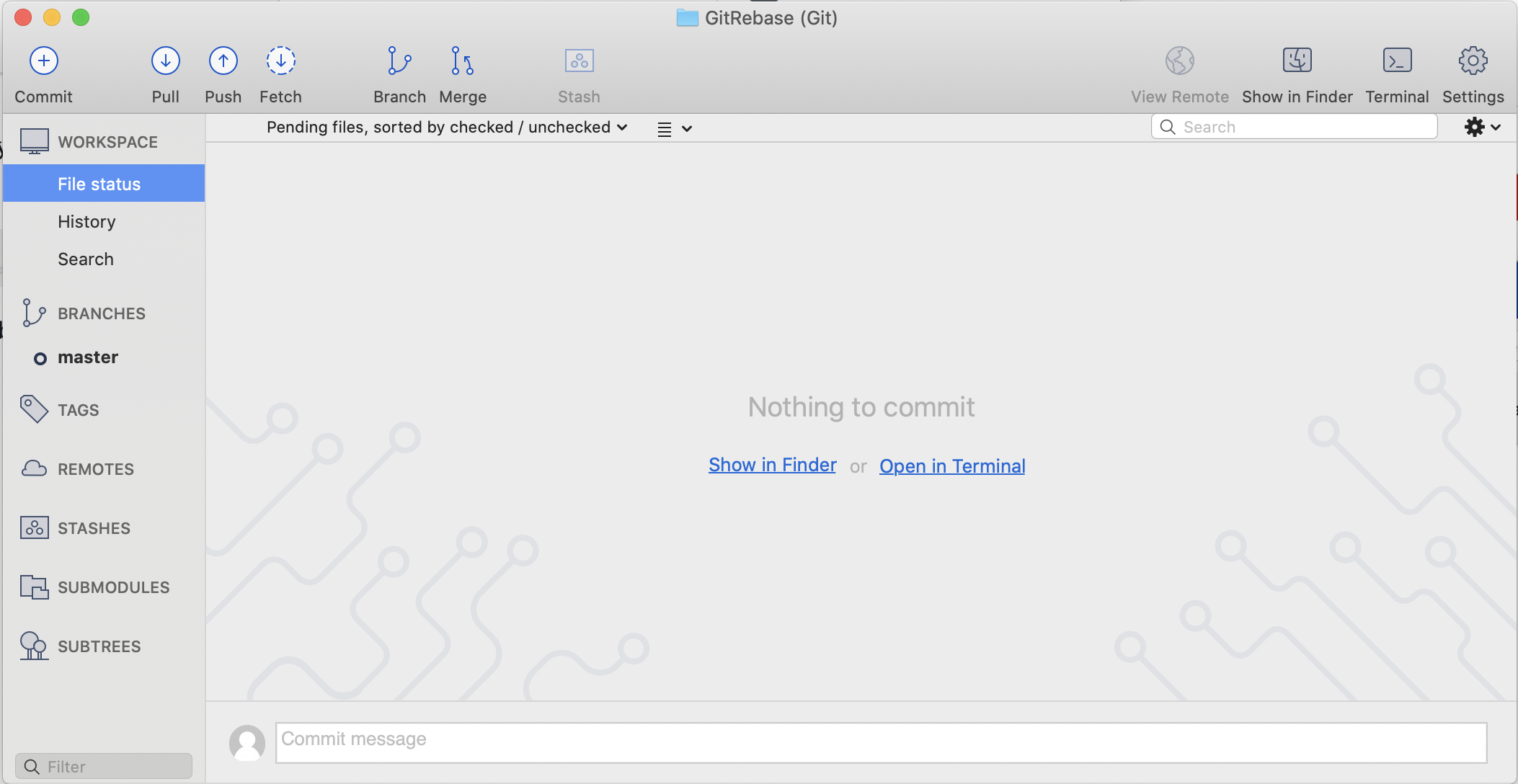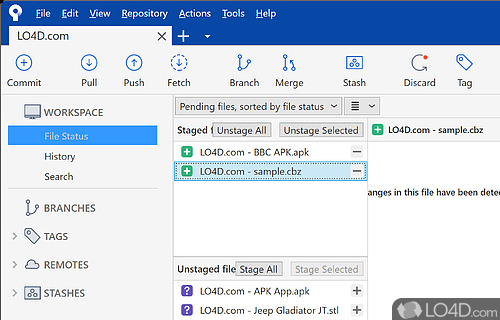
This accumulates each of the feature’s commits. In this example, the branch is still in progress. Visualize and manage your repositories through Sourcetree's simple Git GUI.” Squash Source treeĪs they say on the Sourcetree webpage, “ Sourcetree simplifies how you interact with your Git repositories so you can focus on coding.
Sourcetree rebase in progress update#
That’s because you need to use the option -force, as it will update the feature branch in the origin and allow for a straightforward merge in the repository. Once all files are resolved, the next command should be git rebase -continue which will jump to the next commit on the local feature, but in this case this command will finalize the rebase because of the previous squash of all commits.įinally, the remote branch, normally called origin/, will be in conflict with the normal git push command.

Once that’s done, as Image 5 shows, with the commands git add/rm the files will be marked as resolved. In order to continue with the rebase, the conflicts should be resolved manually. This will display the conflicts that should be resolved manually. In this image git gives a hint: use git am -show-current-patch to see the failed patc h. In Image 5, the results show a rebase with conflicts because the developers touched the same file. Image 5: Result of git rebase commands with conflicts With the master updated, it's time to push all the changes to the repository.Īs shown in Image 2, this process generates a history as a features list instead of a messy collection of commits. Finally, the result of the rebase in the local shows a history described by features instead of little commits with no information.

In this example, the master has two commits more than the master version in the beginning of F4, and a rebase onto the master to align the history is required. Before the merge, it's necessary to make a fetch and pull in the master to see if there are more commits.All commits created for the new feature are squashed and a new commit message is created (F4), usually with the description of the feature.Once it is done in the local, this feature will have a lot of commits (C4, C5, C6, C7, C8.) The new feature started from the origin master.This process is composed of four steps, which are separated in columns in Image 1 and follows the direction of the arrows.


 0 kommentar(er)
0 kommentar(er)
